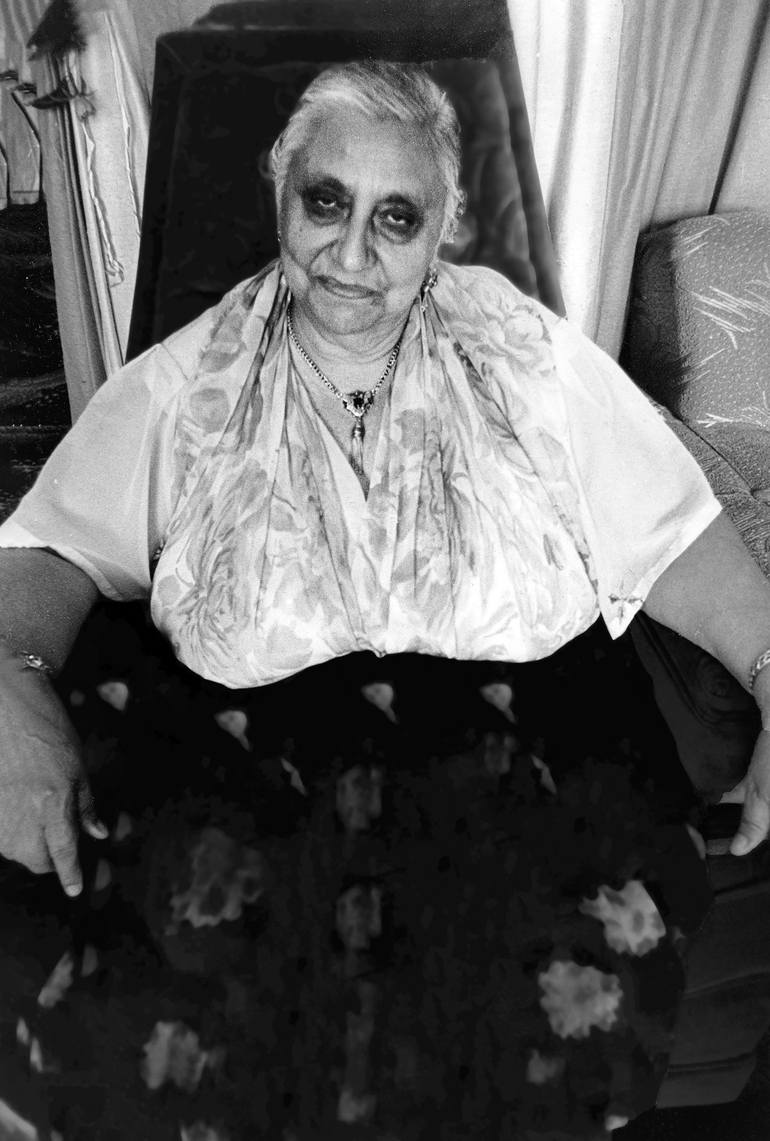


125 Views
0
View In My Room
'''Gypsy Fortuneteller' San Francisco, 1969" - Limited Edition of 15 Photograph
John Crosley
United States
Photography, Paper
Size: 36 W x 24.3 H x 0.1 D in
Ships in a Tube
125 Views
0
Artist Recognition

Artist featured in a collection
ABOUT THE ARTWORK
DETAILS AND DIMENSIONS
SHIPPING AND RETURNS
'''Gypsy Fortuneteller' San Francisco, 1969" One day while walking the streets of San Francisco's downtown area before joining the staff of Associated Press in that city, I was taking what I hoped would be 'interesting' photos. For me, 'interesting', was the essence of photos I sought. The phot...
Year Created:
1969
Subject:
Mediums:
Photography, Paper
Rarity:
Limited Edition of 15
Size:
36 W x 24.3 H x 0.1 D in
Ready to Hang:
Not Applicable
Frame:
Not Framed
Authenticity:
Certificate is Included
Packaging:
Ships Rolled in a Tube
Delivery Cost:
Shipping is included in price.
Delivery Time:
Typically 5-7 business days for domestic shipments, 10-14 business days for international shipments.
Returns:
The purchase of photography and limited edition artworks as shipped by the artist is final sale.
Handling:
Ships rolled in a tube. Artists are responsible for packaging and adhering to Saatchi Art’s packaging guidelines.
Ships From:
United States.
Need more information?
Need more information?
John Crosley
United States
I am a photographer who has taken in the past 12 years, over est. 2 million images, mostly street, with many shown previously under various host sites to over est. 200 million counted viewers. I practiced law very successfully in Silicon Valley, CA for nearly two decades; retiring at about age 40. I am a graduate of NYC's Columbia College, Columbia University. As editor/writer/photographer, I won the Lebhar-Friedman Publishing Blue Chip award for excellence in writing, editing, and photography. For law,I won a variety of awards and special recognition. I attended law school in Silicon Valley, graduating with honors and founding my own Silicon Valley law firm, from which I retired in the late 1980s. I have worked side by side with over a half dozen Pulitzer prize-winning photographers, was shot once, and later medically evacuated from Vietnam while photographing the war there. Self-taught in photography, later, among others, I have been mentored by the following: 1. Henri Cartier-Bresson 2. Sal Vader, Pulitzer winner, Associated Press 3. Wes Gallagher, President/Ceo of Associated Press who groomed me to replace him as A.P. head. 4. Sam Walton, Wal-Mart founder who tried to lure me into his smaller company, now the world's largest. retailer. 5. Walter Baring, Peabody award winner, WRVR-FM NYC's premier cultural radio station. 6./ A variety of great photographers, many Pulitzer winners, including many also from Associated Press,/ Many were Vietnam war colleagues from my freelancing the Vietnam war; others from AP NYC world headquarters. I took H C-B's advice: 'Shoot for yourself, John,' to avoid photo work that would require shooting in a special style. not my own. HCB's s generous, helpful advice also resulted in a career with AP wire service as a world news writer and editor, world service, Associated Press world headquarters, NYC. 6. Michel Karman, Lucie Award photo printer and photo exhibition genius. ent in two 'wars' -- the Vietnamese War, and a prisoner of war taken by Russian separatists in the current Ukrainian--Russian Separatist battles that killed over 10,000 and displaced over 1 million. While writing and as a worldwide photo editor for Associated Press, I was asked to understudy their CEO (worldwide General Manager), to become successor general manager on his retirement, but declined the position. I live the lifestyle of a photographer and am proud of it.
Artist Recognition

Artist featured by Saatchi Art in a collection
Why Saatchi Art?
Thousands of
5-Star Reviews
We deliver world-class customer service to all of our art buyers.
Global Selection of Original Art
Explore an unparalleled artwork selection from around the world.
Satisfaction Guaranteed
Our 14-day satisfaction guarantee allows you to buy with confidence.
Support Emerging Artists
We pay our artists more on every sale than other galleries.
